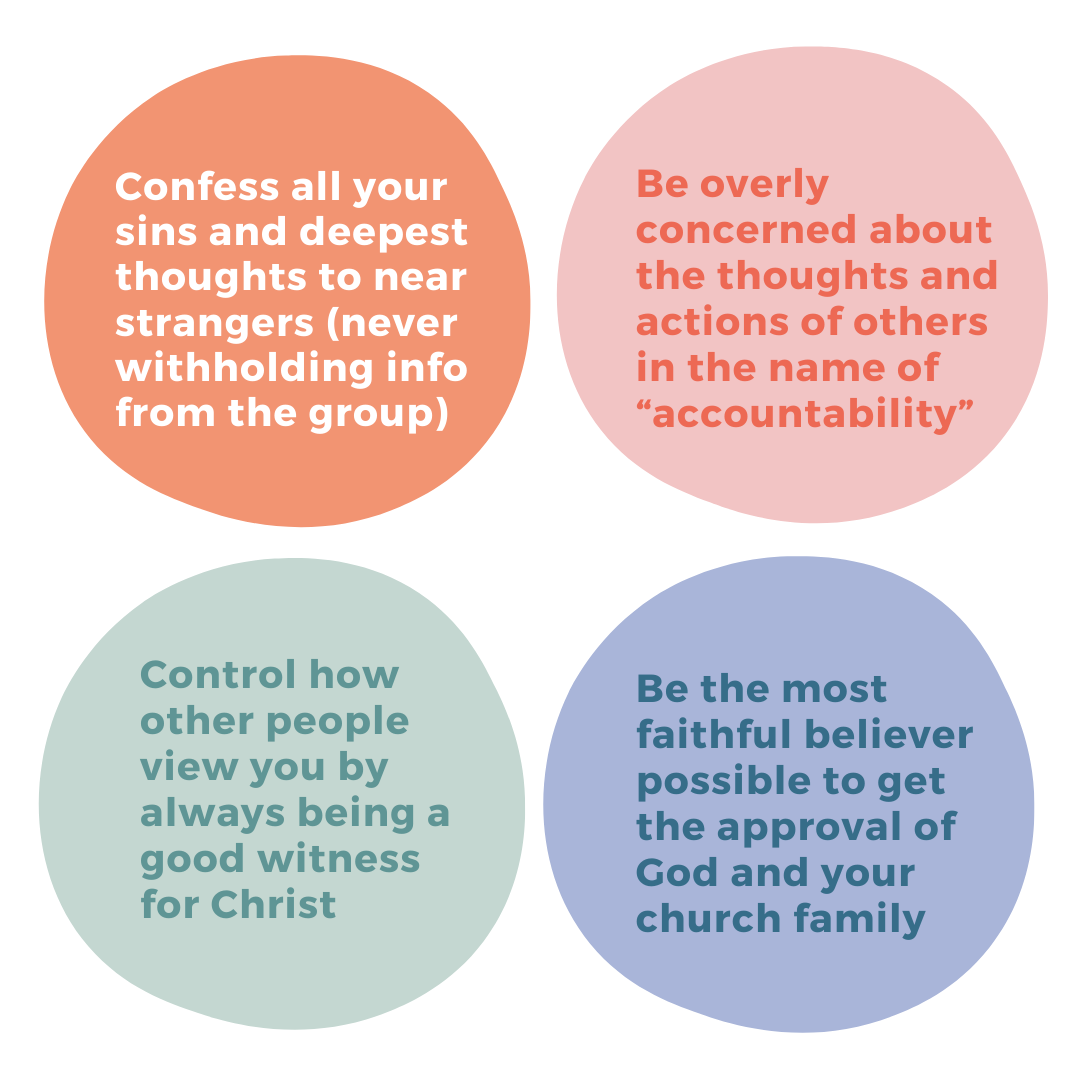When You Are Ready to Talk About Your Faith Transition
Aug 01, 2023Have you been wanting to tell those you love that your beliefs have changed, but the thought of it puts a pit in your stomach? If you're not even sure where to begin, we created this step-by-step process to guide you through it.
To start off, let's talk about how you ended up in this boat. The dread you feel is predictable, not because you’re this weak people pleaser, but because your religious programming trained you to feel this. In fact, do these sound familiar?

Chances are, it's that programming that is still bringing up a LOT of guilt. After all, you’re breaking about a million old religious rules and your body and mind are all screaming at you in fear. But we’re here to help you understand what is going on underneath it all and how to move forward despite it.
STEP 1: SETTING AN INTENTION
Ask yourself, What do I want out of this conversation? What will this do for ME? Do I think this conversation will give me:
- Freedom (so I don't have to hide anymore)
- Authenticity (so I can feel congruent and integrous to who I am)
- Genuine connection (I feel safe toshare this new part of me with someone I trust )
Getting specific about your intentions will help you know how to set up the conversation. We also have these 5 questions to ask yourself to help you have more clarity on that sneaky religious programming that might be driving your decision to share.
STEP 2: PLANNING AHEAD
Next it is time to create a list of What I want and don't want to communicate with this person. Conversations like these trigger LOTS of feelings in you and the other person. When you know you’re walking into a tricky conversation, it’s a good idea to be really clear beforehand about your plan.
- What do you want to make sure to say?
- What topics are pitfalls that you want to avoid?
Making a plan is a great form of self care. It gives you a sense of structure and safety in the midst of conflict. You already know where the land mines will be for you. You identify them beforehand so you can stay away from them as best as you can. We recommend brainstorming a list to help.
Once you know what you do *not* want to talk about, then you can prepare responses to stop conversations that are going in a direction you don’t want it to go so you’ll have them in your head on the day of the conversation.
STEP 3: HAVING THE CONVERSATION
INTENTION: First, tell them your intention and connect to them ("I want to talk to you about something that is really hard for me to talk about, but because I value our connection so deeply I’m willing to feel the discomfort this brings up for me.")
ASK: Second, be upfront with what you would like from them. You can’t guarantee they will respond a certain way, but asking for what you want helps ("I would deeply appreciate it if you would listen to me with an open heart, this is really hard to say and may be hard to hear. I will answers as many of your questions as I can").
SPEAK YOUR TRUTH: Say as much or little as you want. This is what you already planned out in step 2 that you want to say.
CONNECT: Follow up with a connecting statement like this, "Even though I won’t be seeing you at church in the coming months, I do look forward to hanging out this summer. You have been and continue to be such an important part of my life, no matter what changes I’m going through."
STAND YOUR GROUND: Be prepared to continue to hold your boundary of whatever it is you do NOT want to discuss. You should even practice a statement or two like, “Unfortunately you have more questions than I have answers to right now, I just don’t know what I think about that yet.” Or, “I’m not going to debate theology right now, I just wanted to share with you where I’m at currently."
STEP 4: To be continued...

